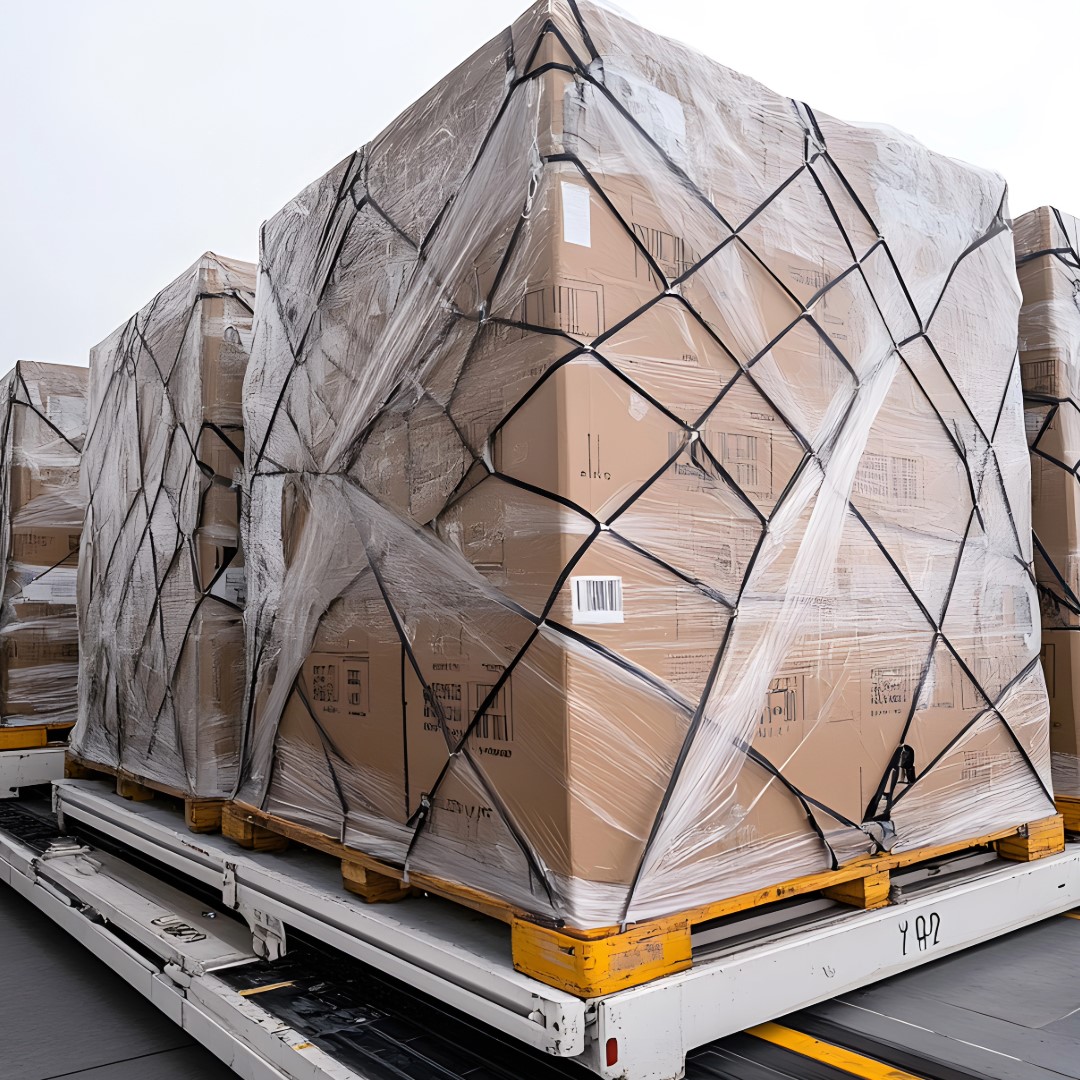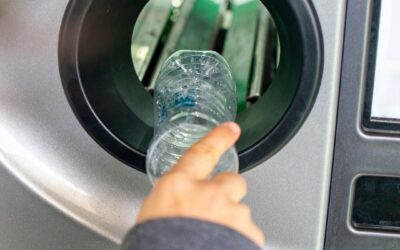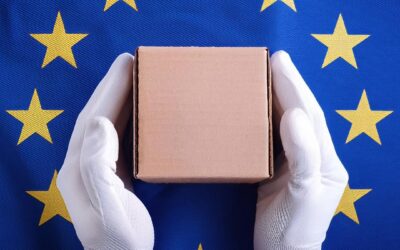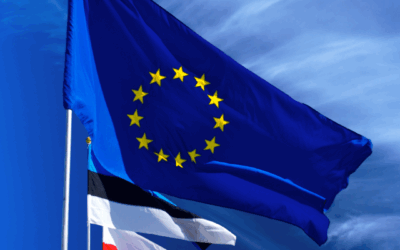Commercial packaging in the EU: basics and differences in packaging types



Anyone who puts packaging into circulation in the EU will sooner or later come across terms such as primary, secondary or tertiary packaging, or even commercial and transport packaging. These terms, behind which categories are hidden, not only serve as definitions, they also have a practical impact on the obligations under extended producer responsibility (EPR) and on the volume-based reporting of packaging quantities.
In this article, we explain the differences between the packaging types, the legal basis for them and how some EU member states – specifically France, Austria and Spain – deal with commercial packaging.
The legal basis for commercial packaging: EU Directive 94/62/EC
The categorisation of different types of packaging goes back to EU Directive 94/62/EC on packaging and packaging waste. The aim of the directive is to minimise the environmental impact of packaging waste and to create a uniform understanding of packaging categories throughout Europe. The directive has been transposed into national law by the EU member states, in some cases with differing interpretations in detail.
The directive distinguishes between:
- Sales packaging (primary packaging)
- Secondary packaging (grouped packaging / secondary packaging)
- Transport packaging (commercial packaging / tertiary packaging)
The packaging categories at a glance
1. sales packaging - the direct product packaging
Sales packaging is the first packaging in which a product is placed and thus forms a sales unit. It protects the product itself and is usually disposed of at the end consumer’s home. Examples:
- Yoghurt pot
- Toothpaste tube
- Sausage packaging
- Bread roll bag
- Packaging for a light bulb
Packaging that is nested several times and in which the product is individually packaged again can also fall into this category.
2. outer packaging or secondary packaging
Outer packaging combines several packaging units and is primarily used for protection during transport and storage. This packaging is often found in retail and warehouses, and only sometimes with end consumers. Examples:
- The cardboard box in which yoghurt pots are bundled
- Shrink-wrap around several bottles (multipacks)
- Shipping cartons in e-commerce, incl. filling material
3. transport packaging or commercial packaging
Transport packaging is used to transport goods between individual stages of trade and is generally used in the B2B (business-to-business) sector. It protects products from damage and the effects of the weather and contributes to safe transport. They are therefore used for the logistical bundling of larger packaging units, e.g. for transport between manufacturers, wholesalers, retailers or industry. Transport packaging is therefore also considered commercial packaging, as it is usually disposed of or reused in trade or commerce. It is rarely visible to the end consumer. Examples:
- Pallets that are wrapped in stretch film
- Transport boxes made of plastic or wood
- Large cardboard boxes for transport between warehouses
- Bags and foamed trays
Commercial packaging in practice: A look at the EU
Transport and commercial packaging is very different from sales packaging, as it is only sent from retailer to retailer. End consumers do not get to see it. Distributors and retailers are obliged to take back the materials used and dispose of them properly. Each country has its own regulations and contact points, some of which differ from the rules for sales packaging. The implementation of Directive 94/62/EC therefore differs from one EU country to another. A brief overview from three countries:
France:
France explicitly includes commercial packaging (industrial and commercial packaging) in the EPR system. Since 2025, the take-back obligation has therefore also applied to industrial packaging. The distinction between packaging types is important for correct reporting and participation. France also often requires detailed information on material type and packaging purpose.
Austria:
Packaging used in the B2B sector in Austria has also been subject to the country’s Packaging Act since 2023. Depending on the type of packaging, companies must fulfil different take-back or system participation obligations.
Spain:
Spain is also following suit: since 2025, the system participation obligation has also applied here for commercial packaging. Companies must register, report volumes and comply with different requirements depending on the type of packaging. In Spain, a distinction is made between two categories of commercial packaging: commercial packaging and industrial packaging. The former is used in wholesale, retail and catering, for example. The latter is used in industry or forestry.
Conclusion: How to be compliant with your commercial packaging
The distinction between the different types of packaging may seem purely technical at first glance, but it is central to the fulfilment of legal obligations in the EU. Anyone placing commercial packaging on the market should take a close look at the national implementations of the EU requirements, as these can differ significantly from country to country. The exact definitions and labelling are also interpreted differently in many countries. With the right partner for EPR compliance at your side, you can ensure that you fulfil all reporting and take-back obligations correctly and that all your packaging is compliant.

LIZENZERO.EU makes packaging compliance in Europe very easy.
Do you ship your products to different countries in the EU? Many different legal requirements and obligations can make the whole thing quite complicated – but don’t worry, we’ll do it for you. How do we do it? With our licensing service, we take over all obligations for you by power of attorney. Sounds good? We’ll be happy to advise you.
For shipping to Germany, you can easily fulfill your packaging obligations yourself via Lizenzero.de.
Deposit systems in the EU explained
Deposit systems show that simple solutions help to keep packaging in circulation and increase recycling rates. However, there are major differences within the EU: while countries such as Germany, Sweden and Finland have been using deposits for years and achieving high return rates, other Member States are still in the early stages.
Mandatory from 2026: The EU Authorised Representative for Packaging explained
Europe is an attractive but regulatory complex market. One of the more complex requirements is the appointment of an authorised representative (AR). The AR is the central interface between the manufacturer and the European market surveillance authorities. The authorised representative plays an important role in product safety and extended producer responsibility (EPR) and is therefore becoming increasingly important to ensure access to the market.
Authorised Representatives in Europe: Which ones are there and what do you need them for?
Europe is an attractive but regulatory complex market. One of the more complex requirements is the appointment of an authorised representative (AR). The AR is the central interface between the manufacturer and the European market surveillance authorities. The authorised representative plays an important role in product safety and extended producer responsibility (EPR) and is therefore becoming increasingly important to ensure access to the market.




